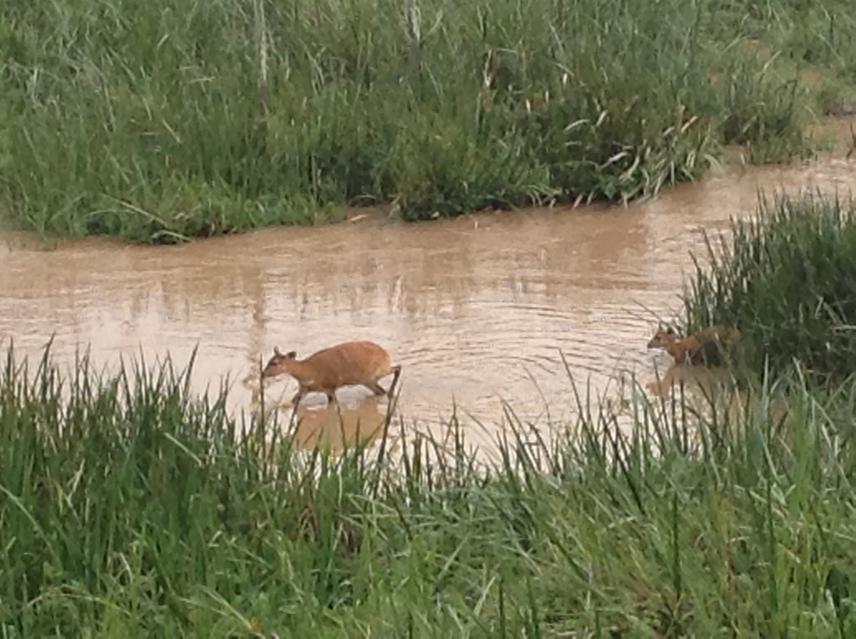Veronica Jenge
Other projects
26 Feb 2015
The Promotion and Upscaling of Conservation Education, Participation and Awareness Creation for the Conservation of Eyasi Basin, Tanzania
The aim of this project is to strengthen the capacity of the local community around Eyasi basin both economically, socially and politically and at the same time create awareness for the conservation of the basin and its biodiversity.

Antelopes in a stream draining in Lake Eyasi.
Tanzania is endowed with exceptional wetland resources, ranging from substantial lake systems to river floodplains and deltaic mangrove formations. Most of these wetlands are however seen as areas in need of development. Those which have been tapped have shifted from multi-functionality to mono-functionality.
The papyrus, grasses and other vegetation have greatly been declining thanks to the unsustainable grazing and harvesting by the adjacent communities. This project is aimed at integrating the wetland benefits with wise use among communities around Eyasi through awareness creation, implementation of wise use policies and stakeholder involvement.
The main objectives of this project are:
1. Increase of knowledge, and awareness of wetland issues (Wetland values, wise use, conservation, management, biodiversity importance and international conventions such as AEWA and Ramsar) among decision makers, local communities and other organized groups.
2. Increased capacity to defend local resources and thus livelihoods from upstream development threats.
3. Ensuring community environmental governance and management through integrated assessment complements on the ongoing wetland management processes.
4. The setting up of the Eyasi Village Environmental Management Plan (EVEMP) which will be implemented by the village “government” with the primary objective of protecting and ensuring sustainable utilization of the village area natural resources and environment.
5. Through the community monitoring and research we hope to come up with a very extensive and complementary data and report drafted through the interdisciplinary field teams of ecologists, biologists, rural sociologists and economists. The data will also be stored in the Species Information Service (SIS) which provides a tool to collate, store and manage the information for each species which will be in tandem with the IUCN. This will be followed by corresponding activities to present findings and solicit feedback from local and national partners in round tables and local dialogues.